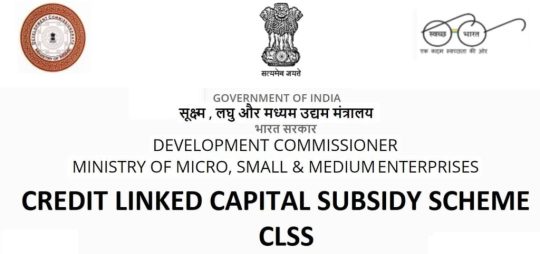#msme schemes
Link
Quick overview on how to prepare project report for MSME Loan. Covering all the aspects that are to be covered in the report.
#project report for pmegp#msme#msme scheme#msme schemes#how to apply for msme loan#msme loan#project report
0 notes
Text
Government (Govt.) Policies for MSMEs | Policies & Schemes Governing MSMEs
In this article we will discuss about various Government (Govt.) Policies or Schemes governing MSMEs (Micro, Small & Medium Enterprises) – Entrepreneurship Development. Govt. Policies for MSMEs
Government Govt. MICRO, SMALL AND MEDIUM ENTERPRISES MSMEs POLICIES OR SCHEMES
In India, Micro, Small and Medium Enterprises (MSMEs) are governed by a range of Government Govt. policies or schemes…

View On WordPress
#Government Policies for Micro small and medium enterprises#Government Policies for MSMEs#Government Schemes for Micro small and medium enterprises#Government Schemes for MSMEs#Govt. Policies for Micro small and medium enterprises#Govt. Policies for MSMEs#Govt. Schemes for Micro small and medium enterprises
0 notes
Text
Empowering Micro Enterprises: MSME Minister Launches Rs 20 Lakh Scheme for GST-Exempted Units Under CGTMSE
Transformative Initiative for Informal Micro Enterprises (IMEs)
In a groundbreaking move, MSME Minister Narayan Rane has introduced a revolutionary scheme specifically designed for Informal Micro Enterprises (IMEs), with the aim of bolstering their access to credit facilities and alleviating financial constraints. Launched under the esteemed Credit Guarantee Fund Trust for Micro and Small…

View On WordPress
#MSME Minister#Narayan Rane#Rs 20 Lakh Scheme#GST-Exempted Micro Units#CGTMSE#Financial Inclusivity#Formalization Drive#Udyam Portal#Digital Ecosystem#MSE Sector#Priority Sector Lending#Credit Facilities#Financial Support#Collateral-free Loans#economic growth#government initiatives
0 notes
Text
Lending money to small and microbusinesses without requiring collateral is the goal of CGTMSE.
Gaining knowledge of the fundamental requirements for CGTMSE loans can improve your chances of getting authorized. Verify your eligibility right now.
0 notes
Text
MSME Loan for Business | MSME Loan Scheme | Unity SFB
Unlock growth opportunities for your business with Unity Bank's hassle-free MSME loans. Apply online and get competitive interest rates and grow your business today!
0 notes
Text
Shreekant Patil : Startup India Mentor, LEAN MSME, ZED MSME Consultant in Nashik Maharashtra India
@shreekant-patil
#Shreekant Patil#Consultant#Startup India#Mentor#Advisor#MSME#Standup#Exporter#ONDC#Govt Schemes#Nashik
0 notes
Text
How to Get a Business Loan without Collateral
Understanding Collateral and Non-Collateral Loans
Collateral refers to an asset or property that a borrower pledges to a lender as a form of security in exchange for obtaining a loan. It serves as a safeguard for the lender, providing assurance that if the borrower fails to repay the loan, the lender can take ownership of the collateral to recover the owed amount.
In traditional loan processes, collateral plays a significant role in reducing the lender's risk and increasing the likelihood of loan approval. Collateral acts as a safety net for lenders, reducing the potential loss in case a borrower defaults on the loan. By having a valuable asset to claim, lenders can recover at least a portion of the outstanding debt. Lenders may offer lower interest rates on loans secured by collateral. This is because the presence of collateral provides lenders with a sense of security, allowing them to extend more favorable terms to borrowers. Collateral allows borrowers to access larger loan amounts than they might qualify for with an unsecured loan. The value of the collateral can determine the upper limit of the loan.

Collateral-based loans come with inherent risks that borrowers should carefully consider before committing to such financing arrangements. When a borrower pledges an asset as collateral, they expose themselves to the possibility of losing that asset in case of loan default. For instance, if a business owner uses their property as collateral for a loan and subsequently faces financial difficulties leading to default, the lender could seize the property, resulting in significant personal and financial setbacks. Moreover, the value of the collateral can depreciate over time or in unfavorable economic conditions, potentially leaving borrowers owing more than the collateral's worth. This "underwater" scenario can lead to financial distress and even bankruptcy. Collateral-based loans can also restrict borrowers' financial flexibility, as they might need to seek lender approval for certain business decisions or asset transactions, limiting their autonomy.
On the other hand, non-collateral loans offer a distinct advantage by eliminating the need for pledging assets, thus mitigating the risks associated with collateral-based borrowing. These loans are often based on a borrower's creditworthiness, business revenue, and repayment capacity, rather than relying on tangible assets. This approach grants borrower's greater peace of mind, as their personal or business assets remain safeguarded. Non-collateral loans provide an accessible avenue for startups and small businesses that may not possess substantial assets for collateral. Additionally, the application process for non-collateral loans can be streamlined and less time-consuming, allowing borrowers to secure funds more quickly. This type of financing also fosters greater financial flexibility, enabling borrowers to allocate funds as needed without constraints imposed by collateral-related terms.
Types of Business Loans without Collateral
Non-collateral business loans encompass a range of financing options that do not require borrowers to pledge assets as security. Unsecured loans, one such option, provide funds based on the borrower's creditworthiness and financial history. These loans often have higher interest rates to compensate for the absence of collateral. Working capital loans offer short-term financial support to cover day-to-day operational expenses, ensuring smooth business operations. Invoice financing, another non-collateral choice, enables businesses to borrow against outstanding invoices, improving cash flow while awaiting payment from clients. These non-collateral loan options empower businesses by providing essential funds without risking valuable assets.
Real-world success stories exemplify the effectiveness of non-collateral loans. For instance, a tech startup secured an unsecured loan to expand its software development operations. Despite lacking substantial collateral, the startup's promising business model and strong credit profile convinced the lender to extend the necessary funds. Similarly, a local manufacturing company obtained a working capital loan to manage seasonal fluctuations in demand and maintain inventory levels. This injection of funds enabled the company to seize growth opportunities and enhance its market presence. Additionally, a creative agency utilized invoice financing to bridge cash flow gaps caused by extended client payment cycles. By leveraging their outstanding invoices, the agency accessed immediate funds, ensuring timely project execution and client satisfaction. These real-life examples underscore how non-collateral loans can catalyze business growth and success.
Tips to Enhance Loan Eligibility.
Enhancing loan eligibility involves taking proactive steps to present a favorable financial profile to potential lenders. Here are some valuable tips to improve your chances of qualifying for a business loan:
Build and Maintain a Strong Credit History : A healthy credit score significantly impacts loan eligibility. Pay bills and debts on time, reduce credit utilization, and rectify any errors in your credit report.
Strengthen Financial Statements : Maintain accurate and up-to-date financial records, including income statements, balance sheets, and cash flow statements. Lenders evaluate these documents to assess your financial health.
Craft a Comprehensive Business Plan : A well-structured business plan illustrates your goals, strategies, and market understanding. It reassures lenders that you have a clear vision for your business's success.
Reduce Debt-to-Income Ratio : Lowering your debt-to-income ratio by paying off existing debts can improve your debt repayment capacity and enhance your attractiveness to lenders.
Showcase Collateral (if available) : Even in non-collateral loans, collateral can enhance your application. If you have valuable assets, their presence can positively influence your loan eligibility and terms.
Remember that each lender may have slightly different eligibility criteria, so research and tailor your application accordingly. Following these tips can significantly enhance your chances of securing the business loan you need.
Building a Strong Business Case
Creating a persuasive business case that showcases the viability of a loan investment requires a meticulous approach. Start by outlining your business's goals, detailing how the loan will be utilized to achieve them. Provide a comprehensive overview of your industry, highlighting market trends, competition, and potential growth opportunities. Clearly articulate the problem your business aims to solve and how the loan will directly contribute to that solution. Back your case with tangible data, such as financial projections, ROI estimates, and a breakdown of how the loan will positively impact revenue, profits, and operational efficiency. Present a well-researched risk assessment, acknowledging potential challenges and outlining strategies to mitigate them. A compelling narrative that combines solid data, strategic planning, and a clear path to success will make your business case resonate with lenders and instill confidence in your loan proposal.
A well-thought-out business plan and accurate financial projections form the backbone of any successful loan application. A robust business plan demonstrates your deep understanding of your industry, target market, and competitive landscape. It outlines your business's unique value proposition, strategies for growth, and potential challenges. Financial projections, including revenue forecasts, expense estimates, and break-even analysis, offer a glimpse into your business's financial future, showcasing its sustainability and potential profitability. Lenders rely on these projections to assess your ability to repay the loan and manage financial obligations. A solid business plan and precise financial projections not only inspire lender confidence but also serve as a roadmap for your own business endeavors, ensuring that you're well-prepared to navigate challenges and capitalize on opportunities.
Managing Finances and Repayment
To ensure optimal utilization of the loan funds for driving business growth, strategic financial management is essential. Begin by outlining a detailed budget that allocates funds to key areas such as marketing campaigns, inventory expansion, technology upgrades, and hiring skilled personnel. Regularly monitor and track expenses against the budget to maintain fiscal discipline. Prioritize investments that directly align with your business goals, maximizing the return on investment and fostering sustainable expansion. Additionally, consider setting aside a portion of the funds as a contingency reserve to address unforeseen challenges. Consistent financial analysis and prudent decision-making will enable you to harness the loan funds effectively, accelerating your business's trajectory toward success and prosperity.
Tips for maintaining a positive cash flow and utilizing the funds strategically
Maintaining a positive cash flow and strategically utilizing funds are critical for sustainable business growth. Here are some tips to achieve these goals:
Accelerate Receivables : Encourage timely payments from customers through incentives or penalties for late payments. This accelerates cash inflows and enhances liquidity.
Prioritize High-Value Investments : Allocate funds to initiatives that directly contribute to revenue generation or cost savings. Strategic investments ensure maximum returns on the funds utilized.
Build Emergency Fund : Set aside a portion of your cash reserves as an emergency fund to cover unexpected expenses, reducing the strain on your working capital.
Diversify Revenue Streams : Relying on a single revenue source can be risky. Diversify your offerings or target markets to create stable, multiple income streams.
Optimize Inventory Management : Keep inventory levels lean by using data-driven inventory management techniques. This prevents tying up excess capital in unsold goods.
Review and Adjust : Regularly review your financial strategies and adjust as needed based on changing market conditions, business performance, and cash flow patterns.
Conclusion
In the dynamic landscape of business financing, the realm of non-collateral loans presents a realm of possibilities for growth-oriented ventures like Mpower Credcure. These financing avenues unlock opportunities that transcend traditional constraints, enabling businesses to access vital capital without jeopardizing valuable assets. By embracing non-collateral loan options, Mpower Credcure and fellow entrepreneurs can tap into a new era of financial flexibility and empowerment. It's imperative to recognize that these opportunities exist to fuel innovation, enhance operational capabilities, and foster expansion, serving as a catalyst for achieving ambitious goals. As we navigate the ever-evolving business landscape, let us take proactive steps in exploring these innovative financing solutions, leveraging them to shape a thriving future for our enterprises and seize the untapped potential that awaits.
#business loan type#entrepreneur loan scheme#sme loan interest rate#flexi business loan#msme business loans#Business Loan MSME#Business Loan Providers In India#Company Loan Interest Rates#Business Loan Instant approval
0 notes
Text
Hospital Subsidy Consultants | Food Processing Unit Subsidy | Business Loan Msme
How Consultancy Can Help You?
There are leading industrial consultancy providers who have specialized in offering the stylish services for both central and state government subventions for artificial enterprises in India.
As you know, colorful Central Government Subsidy Consultants and State Government offer subventions for new systems and the expansion of other systems. To garner further knowledge about the guidelines for similar subventions, the advisers are there to offer you a detailed companion.
Right from the conception till acquiring the subventions to your establishment, you'll garner the knowledge and the proceedings for all. Anyhow of the size or typography of the enterprise, if you match through the process leading to garner subventions, there's no looking back.
Advisers have in- depth knowledge about all the schemes which isn't possible to garner for anybody differently. The educated platoon of professionals keep themselves modernize with their knowledge about the rearmost scheme of subventions that's blazoned by the Government.
In parts of the Central and state government, subventions for the establishments of newer systems and contemporizing the being systems. Being systems make way to expansion, diversification, recuperation and modernization are also eligible for government subventions.
0 notes
Text

Government RAMP scheme: Empowering MSMEs for sustainable growth
Micro, Small, and Medium Enterprises (MSMEs) play a pivotal role in fostering economic growth, generating employment opportunities, and promoting entrepreneurship. Recognising their significance, governments across the globe have introduced various loan schemes to support and empower these enterprises. In line with this, the Government RAMP Scheme has emerged as a game-changer for MSMEs, providing them with a comprehensive platform for growth and development.
The full form of the RAMP scheme is Raising and Accelerating MSME Performance. And this programme was launched to improve the performance of MSMEs by assisting them with the latest technology and knowledge. In this article, we will delve into the key features, benefits, and impacts of the Government RAMP Scheme, highlighting its significance in boosting the MSME sector.
Key features of the government RAMP scheme:
1. Financial support: The RAMP scheme focuses on providing financial assistance to MSMEs in the form of grants, subsidies, and low-interest loans. This support enables enterprises to enhance their production capabilities, invest in technology upgradation, and expand their market reach.
2. Skill development initiatives: Recognising the importance of skill development for MSMEs, the RAMP scheme incorporates programs to enhance the knowledge and capabilities of entrepreneurs and their employees. Training sessions, workshops, and mentoring programs are conducted to foster innovation, improve productivity, and ensure competitiveness in the global market.
3. Access to technology: The scheme emphasises the adoption and integration of technology by MSMEs. It provides financial aid for the acquisition of advanced machinery, equipment, and software, enabling enterprises to improve efficiency, reduce costs, and enhance product quality. Additionally, the RAMP scheme facilitates access to technical support and consultancy services, assisting MSMEs in their technological advancements.
4. Market linkages and export promotion: This scheme strives to connect MSMEs with domestic and international markets. It facilitates participation in trade fairs, exhibitions, and business summits, enabling enterprises to showcase their products and establish networking opportunities. Moreover, the scheme offers support for export promotion, including market research, export documentation, and financial assistance for international marketing initiatives.
5. Infrastructural development: Recognising the significance of robust infrastructure for MSME growth, the RAMP scheme focuses on improving industrial clusters and developing industrial parks. It aims to create a conducive ecosystem for MSMEs by providing them with access to shared facilities, common infrastructure, and a supportive business environment.
Benefits and impacts:
1. Enhanced competitiveness: The government RAMP scheme empowers MSMEs to enhance their competitiveness through financial support, skill development initiatives, and access to technology. By enabling enterprises to upgrade their processes, products, and services, the scheme facilitates their integration into global value chains, fostering sustainable growth and competitiveness.
2. Employment generation: MSMEs are significant contributors to employment generation, particularly in developing economies. The RAMP scheme's focus on skill development and capacity building translates into increased employment opportunities. As MSMEs grow and expand their operations, they create jobs, reducing unemployment and driving inclusive economic development.
3. Increased export potential: The scheme's emphasis on export promotion opens up new avenues for MSMEs to explore international markets. By providing assistance in market research, export documentation, and marketing initiatives, the RAMP scheme equips enterprises with the necessary tools to expand their export potential. This not only diversifies revenue streams but also strengthens the national economy.
4. Technological advancements: The integration of technology through the RAMP scheme enables MSMEs to improve their efficiency, productivity, and product quality. By adopting advanced machinery, software, and processes, enterprises can streamline operations, reduce costs, and meet global standards. This technological transformation leads to enhanced competitiveness and better market positioning.
Disclaimer: Please note that the information provided in this article is intended for general informational purposes only and should not be construed as professional advice or relied upon as a substitute for consultation with qualified experts. The accuracy, completeness, and timeliness of the information presented in this article may vary and are based on the knowledge and resources available at the time of writing, which may not be comprehensive or up-to-date.
0 notes
Text

an eligible MSME can avail a credit amount ranging from ₹1 lakh to ₹5 crores. Available from both traditional institutional lenders and NBFCs, a business owner can get this msme loan scheme at a yearly interest rate of 8.50%.
0 notes
Text
0 notes
Text
What is Credit Linked Capital Subsidy Scheme for Technology?
What is Credit Linked Capital Subsidy Scheme for Technology?
Description: –
The purpose of the Yojna is to provide technology update in MSE by providing capital subsidy of 15% of loan. The purpose is to upgrade their plant & machinery with new technology and also for new MSME.
List of Technologies is available at www.dcmsme.gov.in
The Yojna is a demand depended, without any upper limit, on annual spending on the subsidy disbursed.
Nature of help:
The…

View On WordPress
0 notes
Link

The Pradhan Mantri Mudra Yojana (Mudra Loan)
Mudra Loan
Under the flagship scheme of the Government of India, The pradhan mantri mudra yojana(mudra loan), or PMMY has extended affordable credit to micro and small enterprises. This scheme was launched on 8th April 2015 and was designed to provide affordable financial help to small business owners who are engaged in manufacturing, trading, and other services. , micro and small enterprises are growing successfully but slowly. They are contributing greatly to the country’s economy. However, many of these stuck due to shortage of funding. Let's talk about the eligibility criteria to apply for Mudra Loan. There is a huge number of micro, small, medium, and large companies in India.
Eligibility criteria:
The minimum age should be18 years and maximum age should not exceed 65 years.
Applicant should be a citizen of India with no criminal record.
Who can avail Mudra loan:
Startups, Business Owners, Entrepreneurs, traders, retailers, shopkeepers, vendors, and small manufacturers engaging in trading sectors and manufacturing sectors.
Applicants with no past loan defaults with any financial institution shall be preferred.
Loan Amount:
maximum loan up to 10 lakhs.
- Based on the stage of growth and development and according to the funding needs of the micro-entrepreneur. There are three products under the mudra loan scheme, offering versatility to borrowers. The beneficiary can avail of loans given below:
Shishu - Loan up to Rs. 50,000/-
Kishor - Loan between Rs. 50,000 and Rs. 5 lakhs
Tarun - Loan between Rs. 5 lakh and Rs. 10 lakhs
Are you interested in expanding your business? Take benefit of Pradhan Mantri Mudra Yojana today. no collateral or additional security via a third party is required. Contact Financeseva.com to get doorstep assistance or contact us online. We will reach you.
#pradhan mantra mudra yojna(mudra loan)#mudra loan scheme#mudra loan#msme loan#machinery loan#business loan#financeseva
1 note
·
View note
Text
Micro-Business Empowerment: Unveiling 5 Key Insights into CGTMSE Loan Schemes for Sustainable Growth
Micro-Business Empowerment: Unveiling the Pros and Cons of CGTMSE Loan Schemes for Sustainable Growth: Key Insights into CGTMSE Loan Schemes for Sustainable Growth
India’s vast network of Micro, Small, and Medium Enterprises (MSMEs) forms the backbone of the nation’s economy. However, securing funding for these small businesses often proves challenging due to their perceived higher risk profile.…

View On WordPress
#Business Development#CGTMSE Loans#CMA Data#Credit Guarantee Fund Scheme#Empowerment#Entrepreneurship#Financial Consulting#Financial Empowerment#Loan Schemes#Micro-business#MSMEs#Project Reports#Pros and Cons#Small Business Financing#Sustainable Growth
0 notes
Text
Emergency Credit Line Guarantee Scheme supporting MSME, now helping airlines in stress
Emergency Credit Line Guarantee Scheme supporting MSME, now helping airlines in stress
An efficient and strong civil aviation sector is increasingly becoming vital for the economic development of the country. Recognising its importance for the economic growth, the Department of Financial Services (DFS), Ministry of Finance, has modified the Emergency Credit Line Guarantee Scheme (ECLGS) to enhance the maximum loan amount eligibility for airlines under ECLGS 3.0 to 100% of their…

View On WordPress
0 notes
Text
National MSMEs Day 2022: The voice of MSMEs and Their problems due to Inter-State relations of India
National MSMEs Day 2022: The voice of MSMEs and Their problems due to Inter-State relations of India
#సూక్ష్మ, #చిన్న, #మధ్యతరగతి #పరిశ్రమలు ఎదుర���కొంటున్న #సవాళ్ళు , #కేంద్ర, #రాష్ట్ర #ప్రభుత్వాలమైత్రీలేమిదుష్పరిణామాలు, చివరికి నష్టపోయేది #సామాన్య #ప్రజలే అంటే నమ్ముతారా?#MSMEsDay,
View On WordPress
0 notes